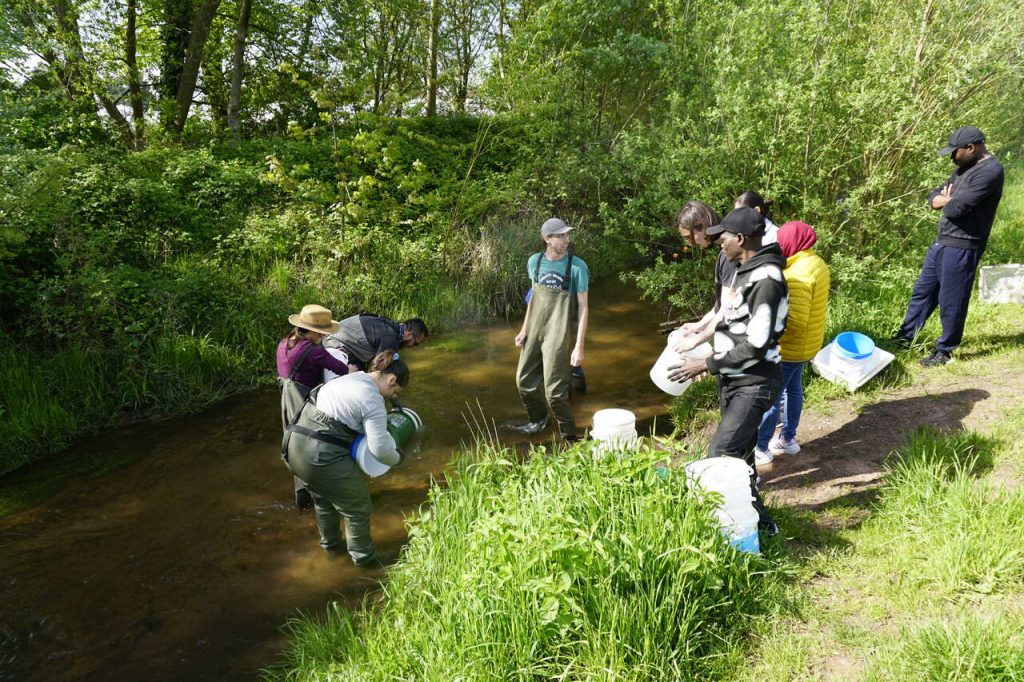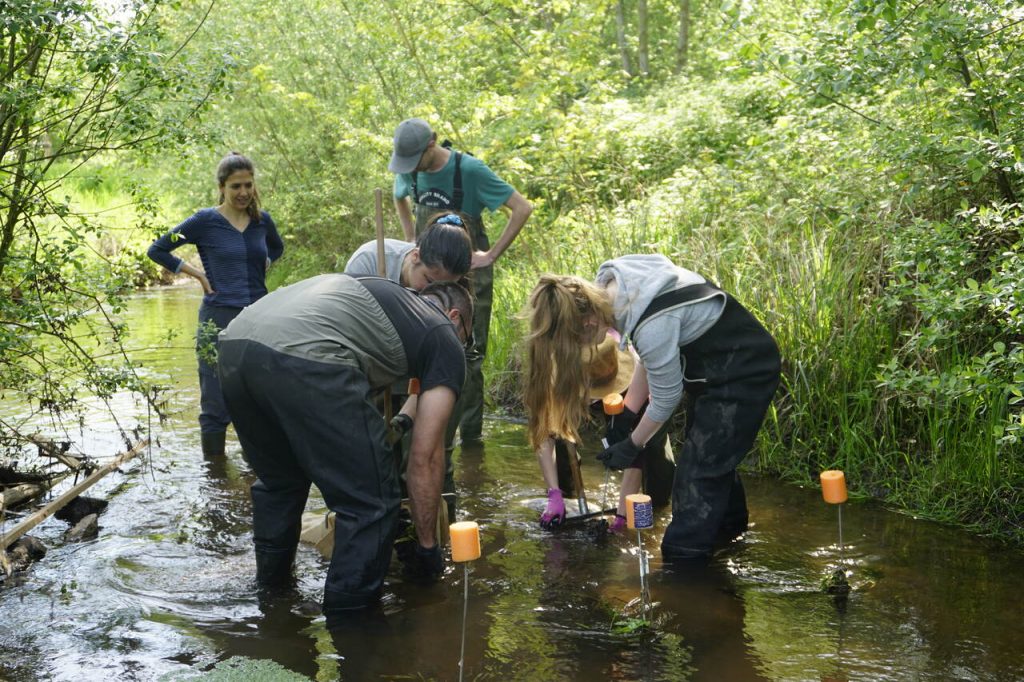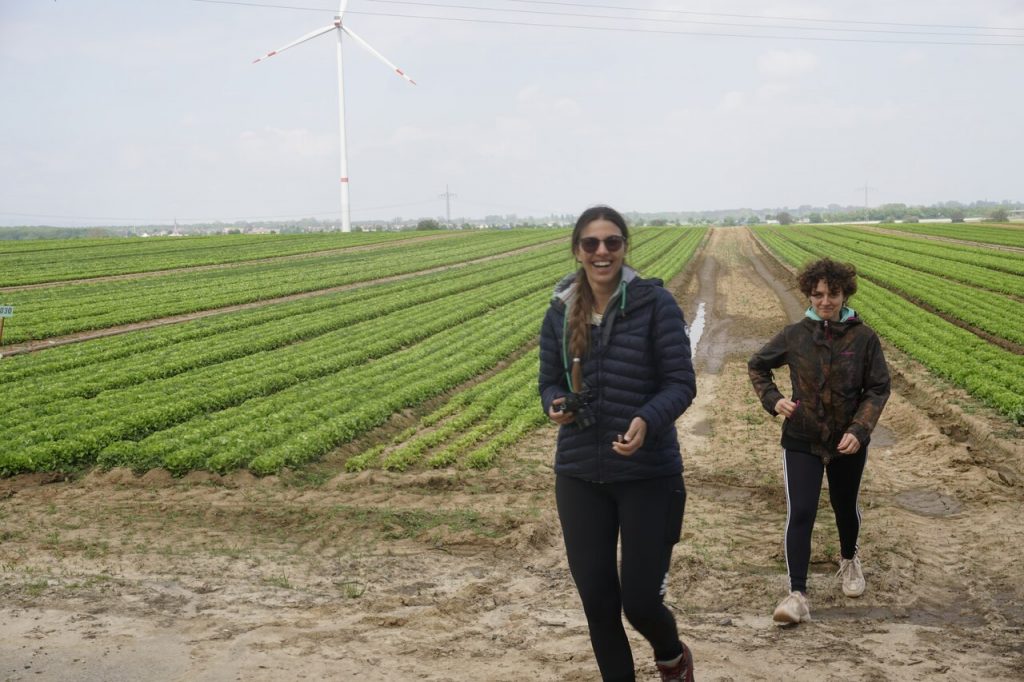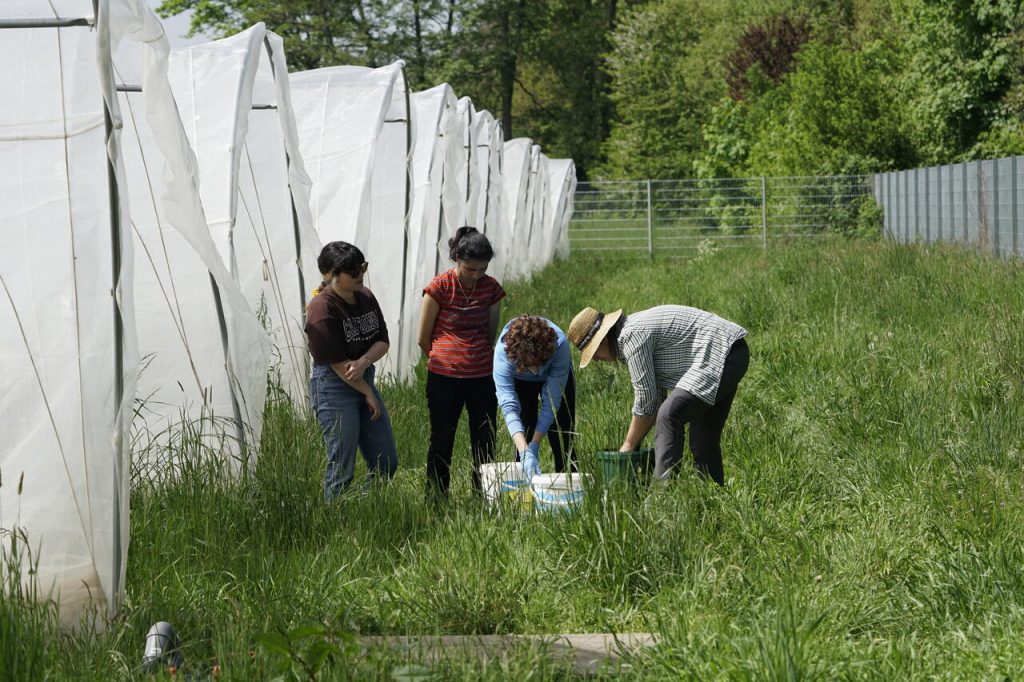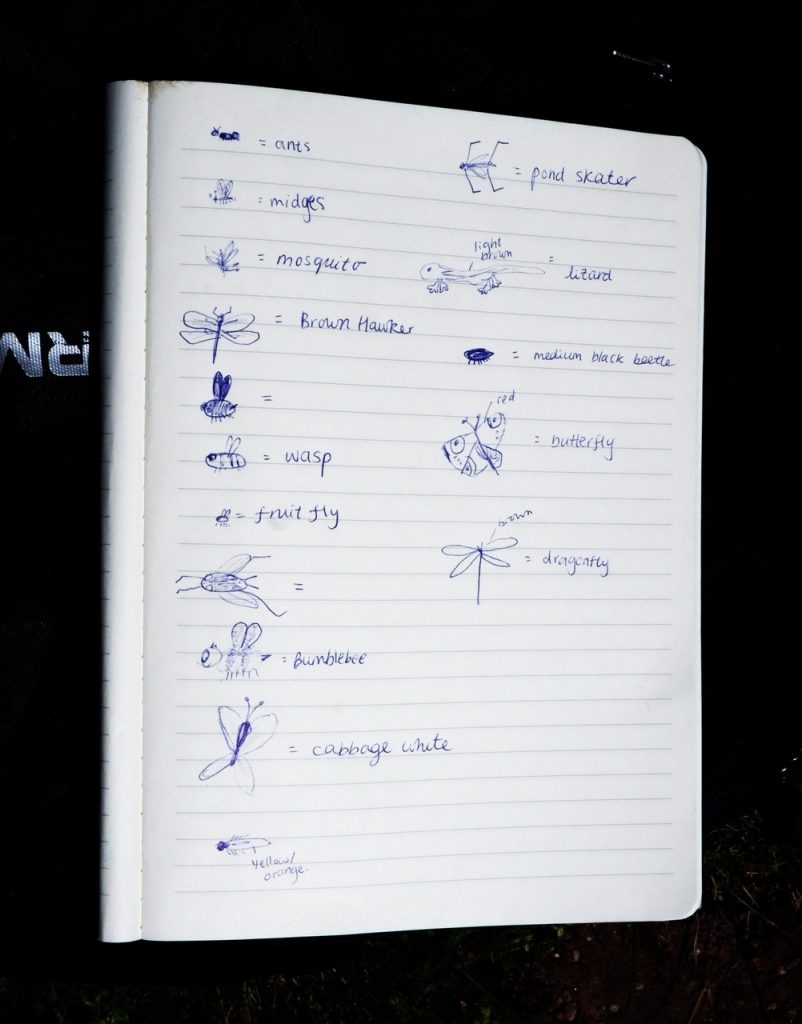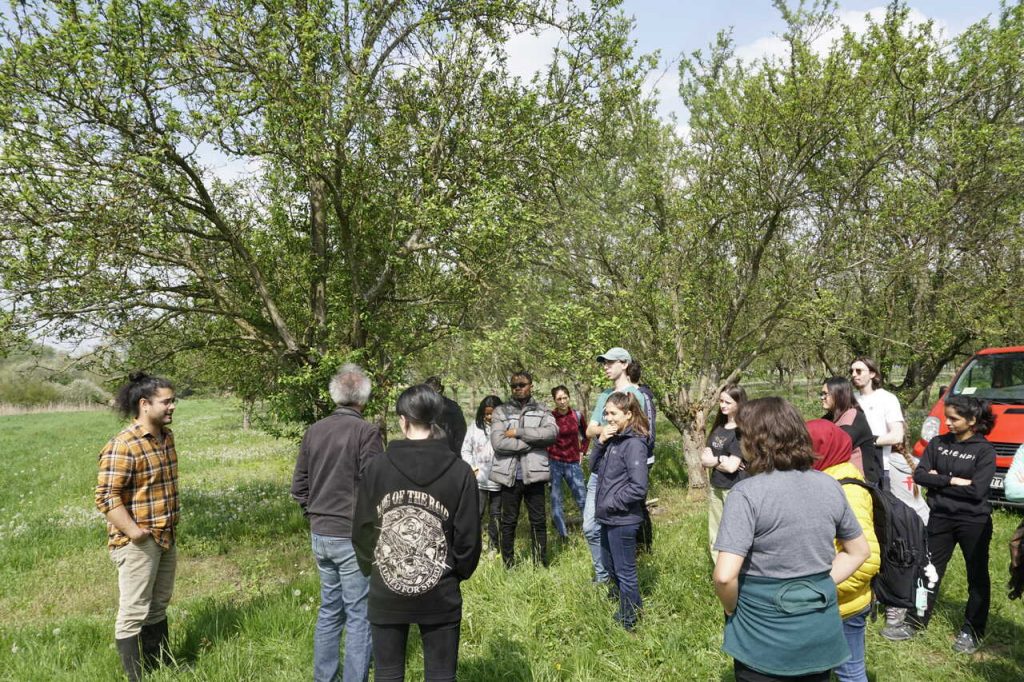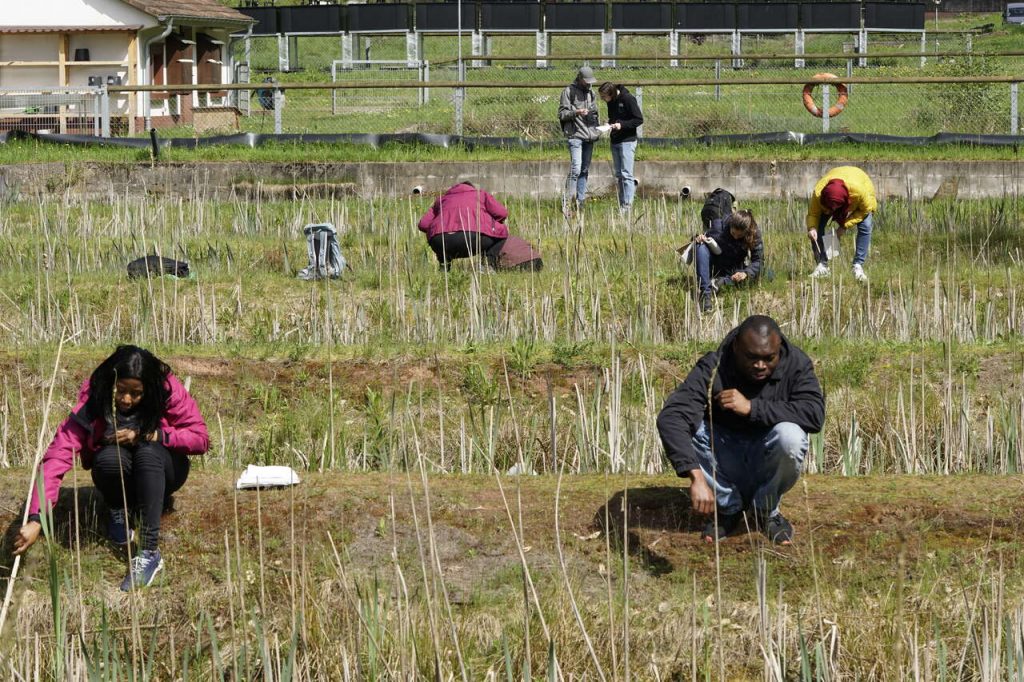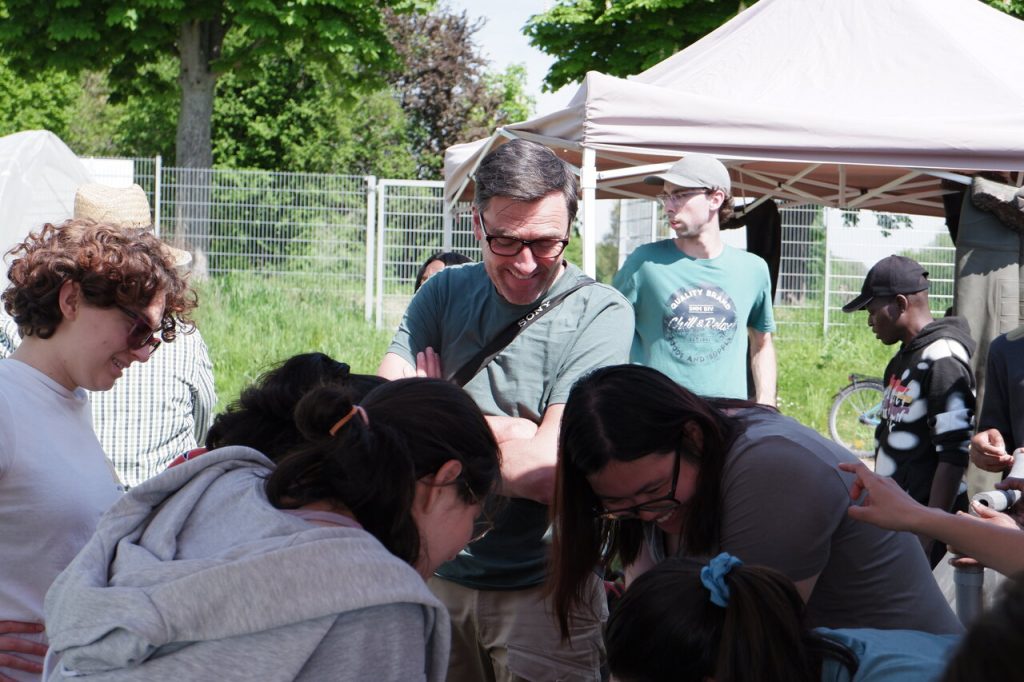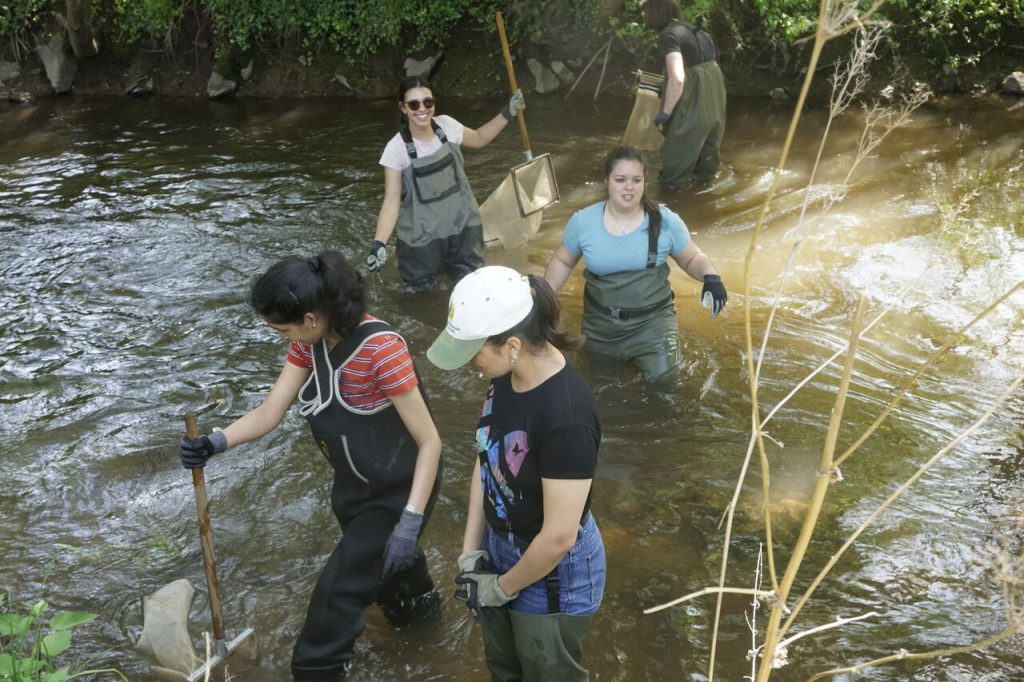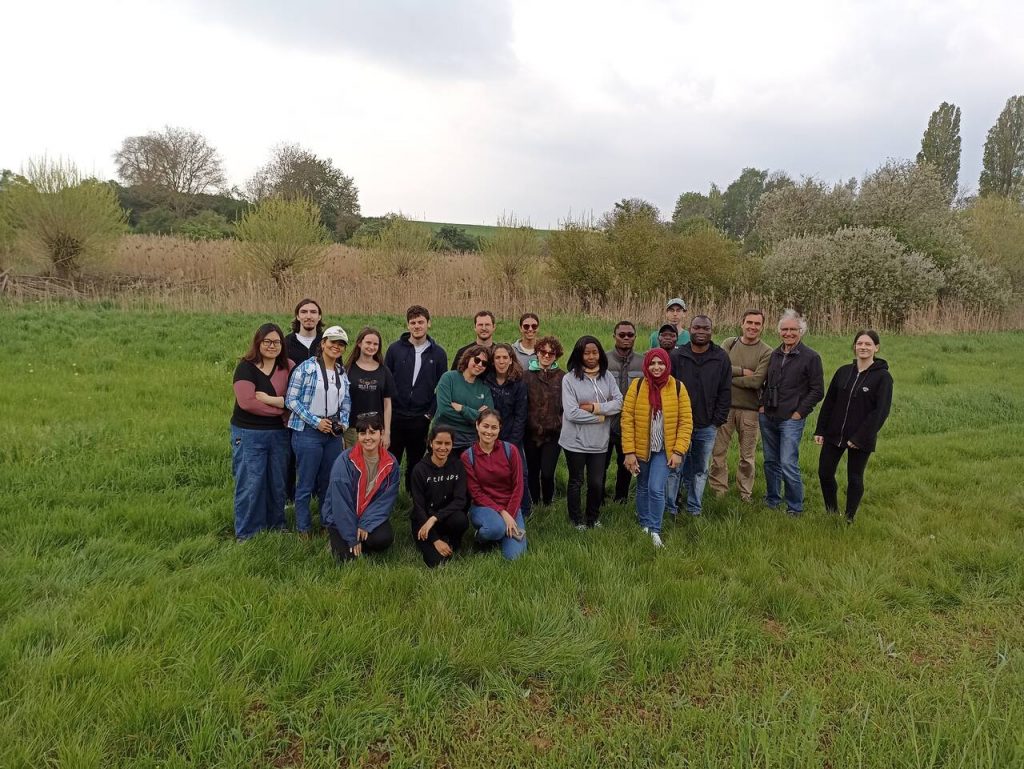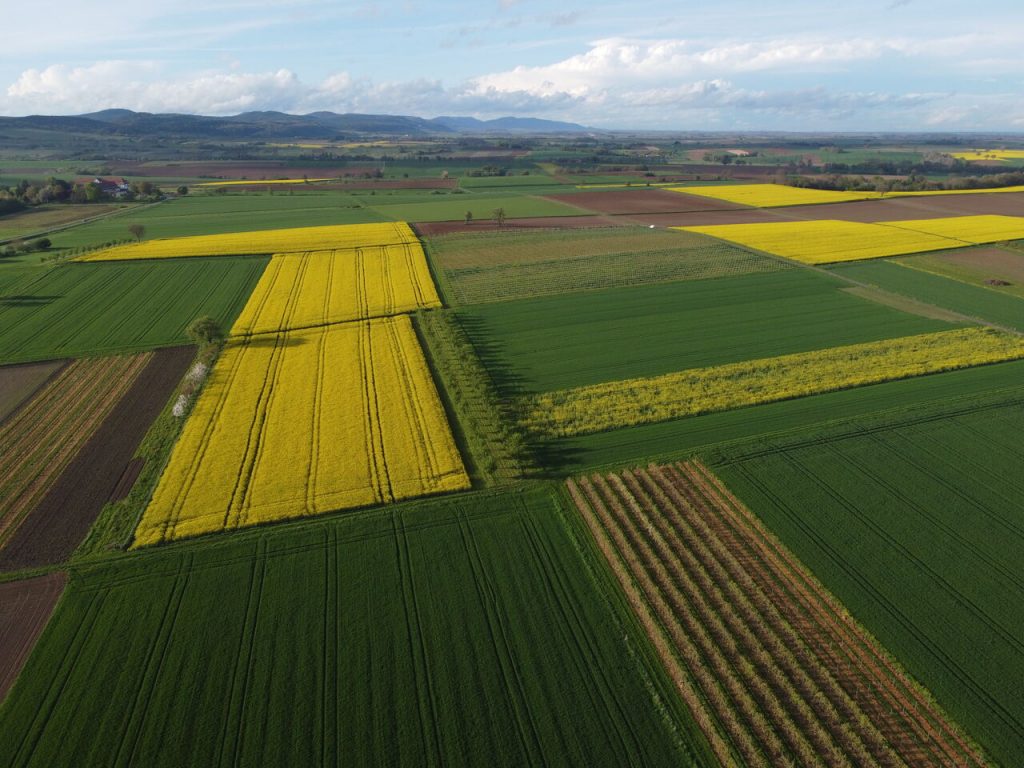In May 2023, a group of M.Sc. Ecotoxicology students along with Carsten Brühl went to the Ecosystem Research Facility, Eusserthal (EERES) and the Riparian Stream Mesocosms (RSM). This excursion was a part of a module in the study program of M.Sc. Environmental Pollution Management (Ecotoxicology). In this blogpost, Danisa Lione and Hajar Bourassi (student representatives of the 2022 cohort), present some brief details about the excursion and their experience.
“In the beginning of May, we, second-semester students of the “Environmental Pollution Management” master program, participated in three excursions as a part of the compulsory module “Methods in Ecotoxicology” with our professor, Carsten Brühl. The objectives were to get an idea about the agricultural landscape and the nature-protected areas around Landau while also familiarising ourselves with some of the methods used for field research in Ecotoxicology.
After a long winter, we were finally blessed with lovely and sunny weather and were able to enjoy the beautiful nature surrounding Landau. On the first day, we drove around the “Pfalz” (Palatinate) area to discover the agricultural landscape. As part of the wine route, the landscape is mainly composed of vineyards, in addition to crops such as lettuce, asparagus, strawberries and rapeseed, among others. It was very interesting to recognize the extent to which nature-protected areas are used for conventional or monoculture agriculture and the impact of pesticide application on wildlife communities. However, it gives some hope to know that there are people such as Mr. Kurt von Nida from the NGO Naturschutzverband Südpfalz (NVS) who are doing their best to protect these areas and the wildlife in them, particularly birds.
On the second day, we drove to EERES, the Ecosystem Research Facility in Eusserthal. As an exercise, Carsten asked each one of us to sit next to a pond, observe and record the different insects to build a food web for this particular ecosystem. This might not sound like the most entertaining activity, but as soon as the warmth of the sun hit the ground, life emerged, and many interesting and fascinating insects could be observed. This exercise was meant to teach us the most valuable skill in research: Observation, when combined with knowledge, gives rise to interesting research questions.
Last but not least, we visited the Riparian Stream Mesocosms (RSM). There, we helped the PhD students set up the 16 mesocosms for an experiment to study the effect of flooding in shaping the communities in the riparian ecosystems. With some waterproof equipment, we jumped into the nearby Queich river to collect aquatic macroinvertebrates using different sampling techniques. One of these techniques was kick-sampling which involves kicking up the bed of the river for 1 min. and catching everything in a net. An interesting but funny way to calculate the time (in case of no watch or timer) is to sing the ‘Happy Birthday’ song 3 times!
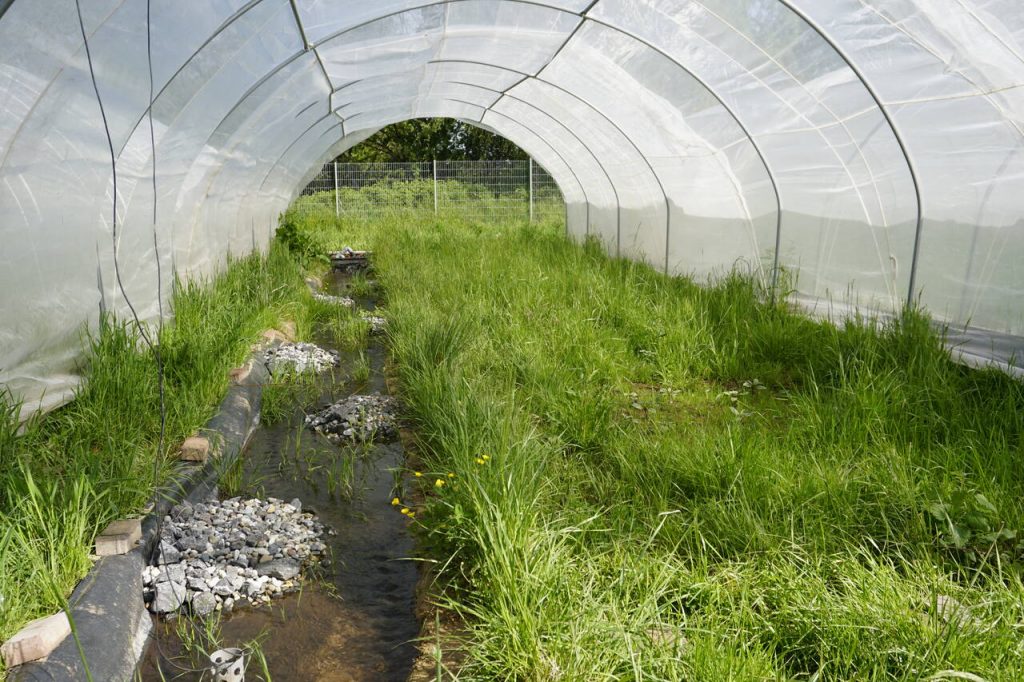
Through these excursions, we were able to witness in person many concepts. which we had learnt in classes and got a glimpse of field research. By the end of the week, we were officially over with lectures (for the time being), and ready to start our internships (AMEO) in different places across Europe!”
Here are some beautiful glimpses from the excursion:-
